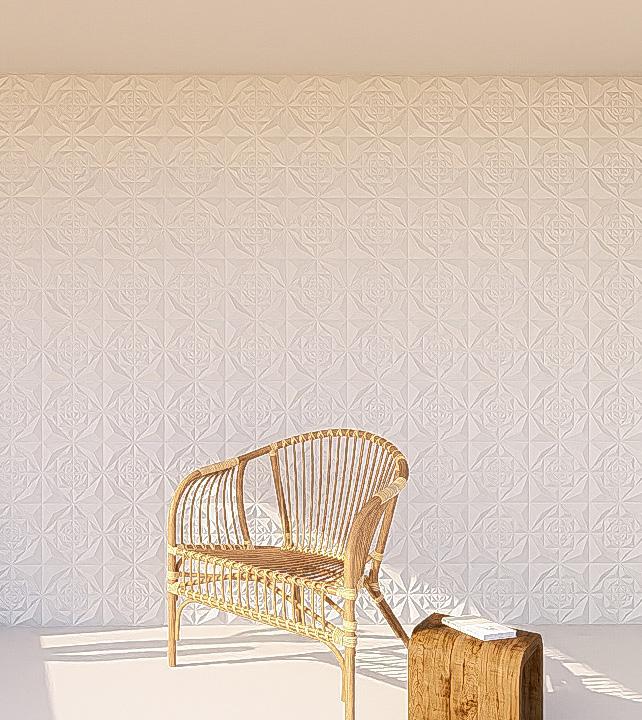FRACTAL
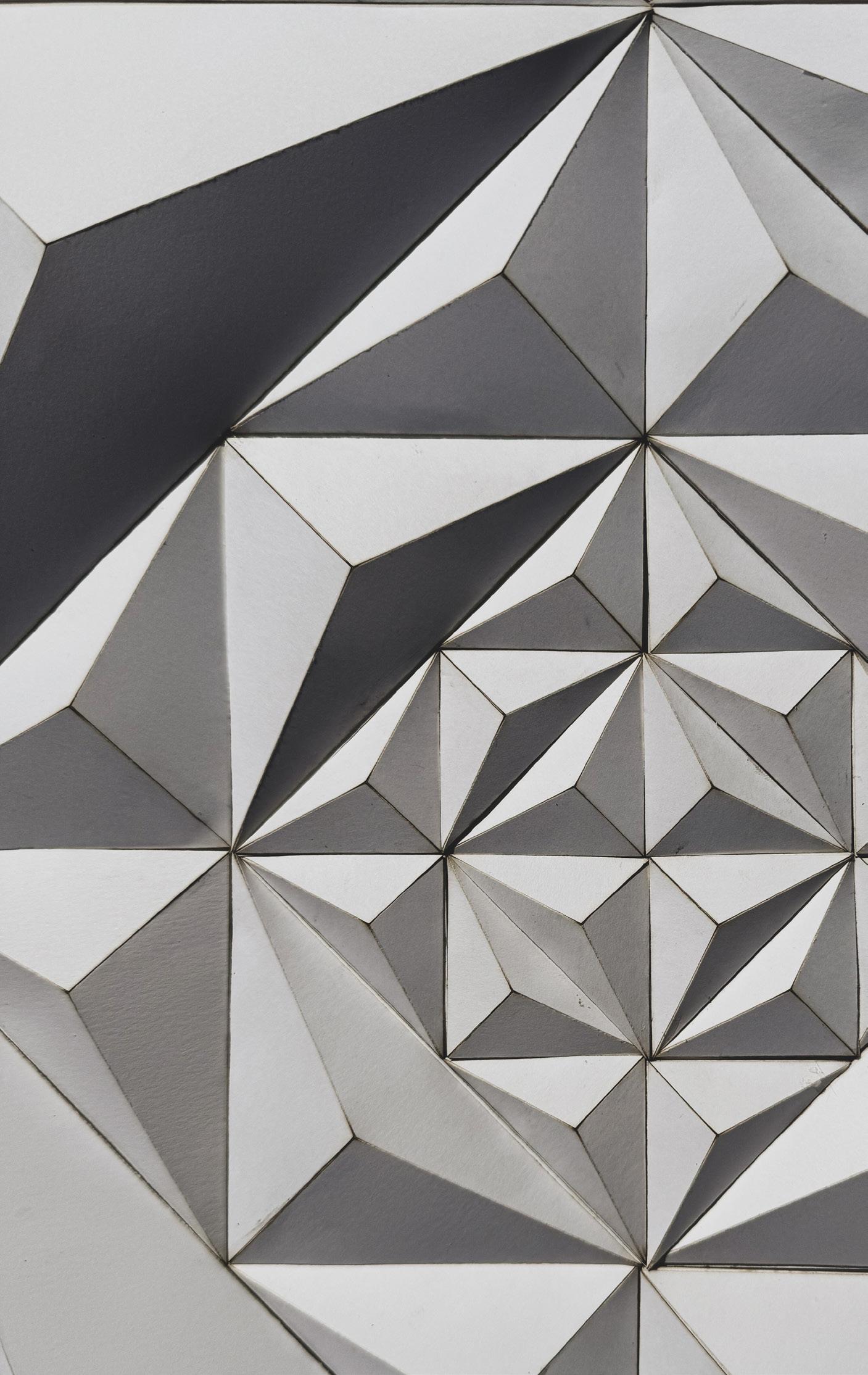
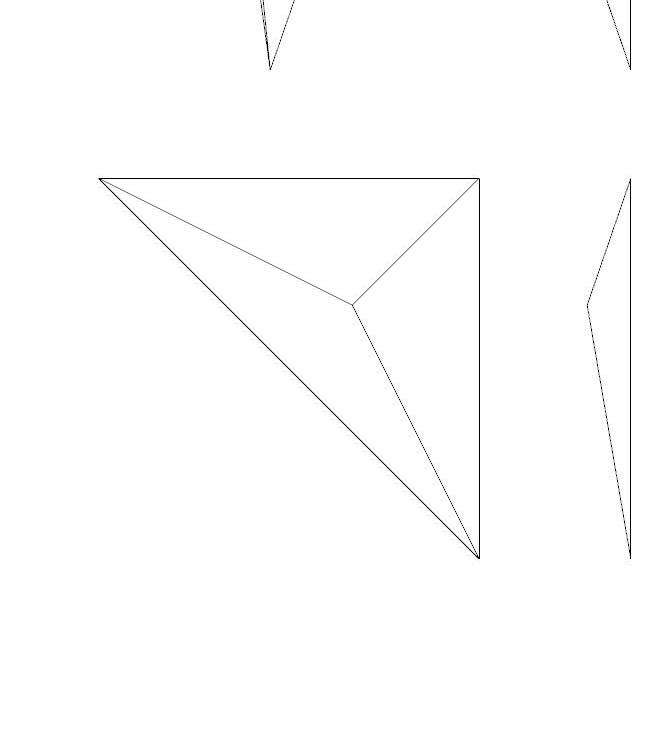
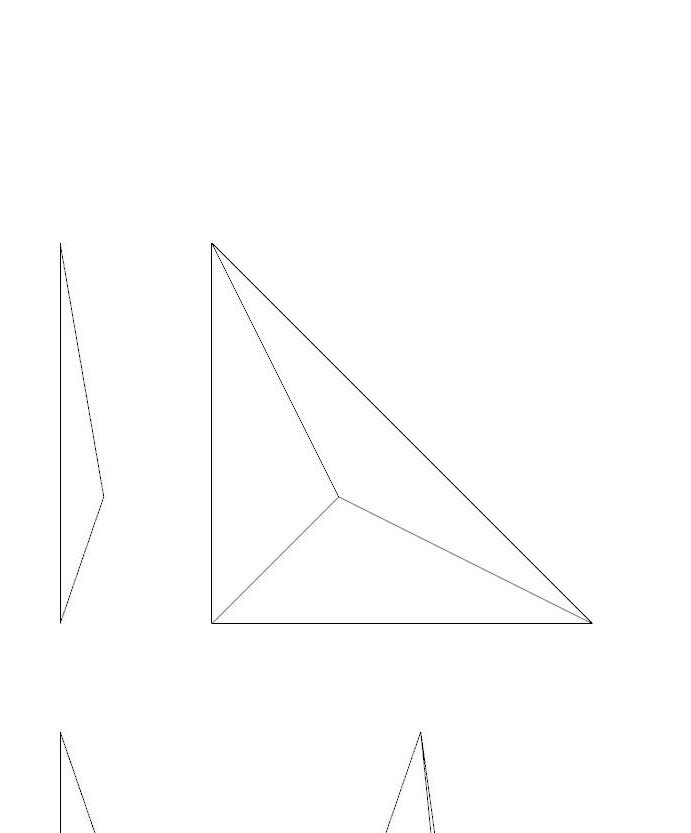
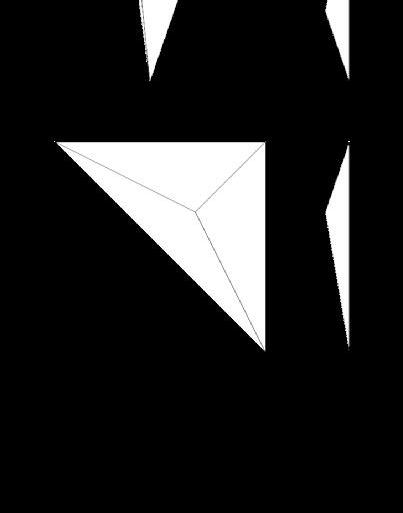
Assignments completed in 2D Fabrication, Spring 2024, at Dunwoody College of Technology, showing the process of developing a tessellated module (from analog to digital).
Thank you for reading!





Assignments completed in 2D Fabrication, Spring 2024, at Dunwoody College of Technology, showing the process of developing a tessellated module (from analog to digital).
Thank you for reading!


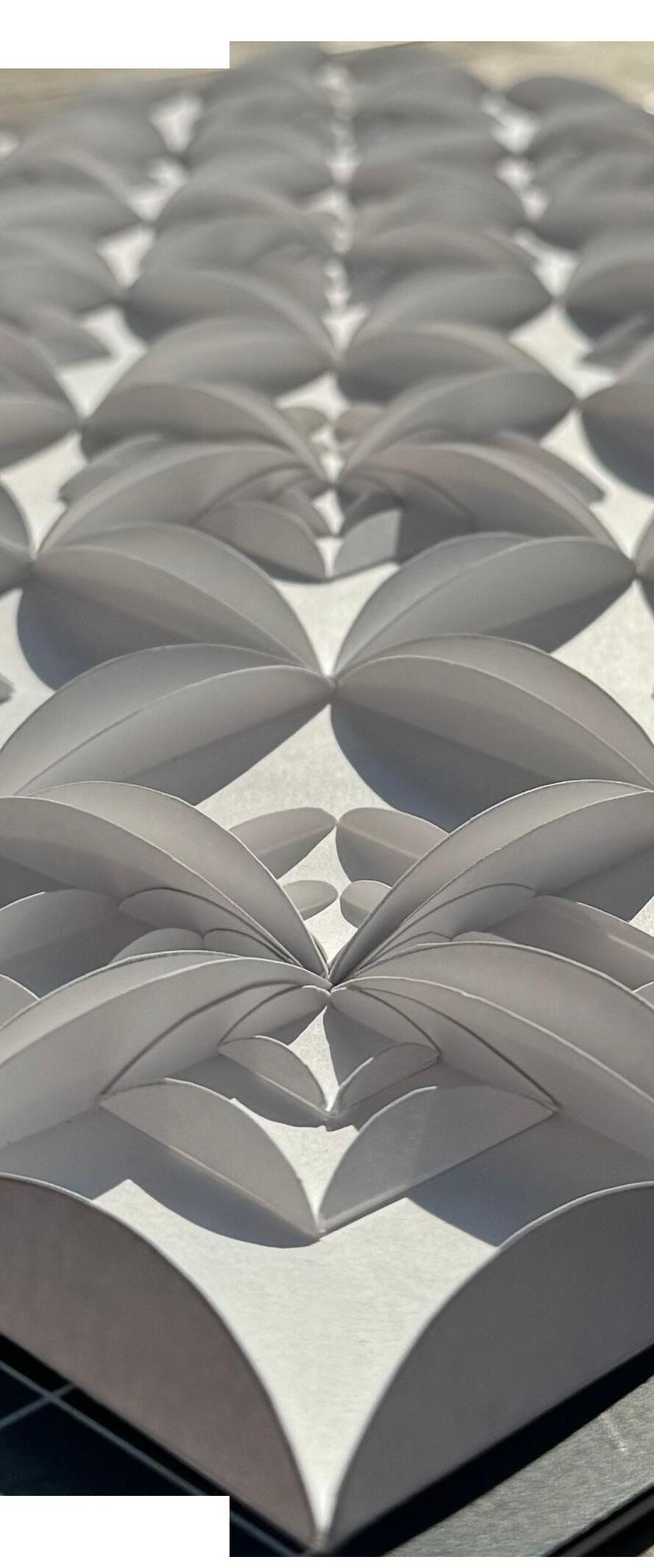



Using what I learned through iterative folding and sketching, my final concept sketch (right) uses circles folded at their edges to align together as squares. These circles diminish in size by half their diameter, nested within their original folded circle.
I started this semester not really knowing where we were headed, but wanting to understand the relationship between simple geometries a bit better.
The first tessellation I sketched (left) was a series of circles aligned edge to edge, that were then overlaid with other circles intersecting those meeting points. I shaded the spaces between to better understand the shapes’ relationship with one another.
I have been most interested with how to nest simple shapes within one another to create changing form with shadow.
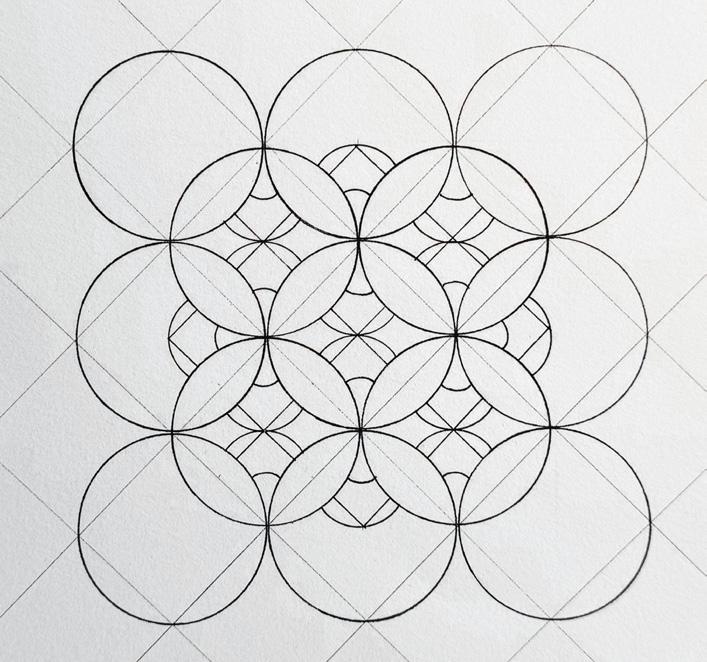
CONCEPT SKETCH


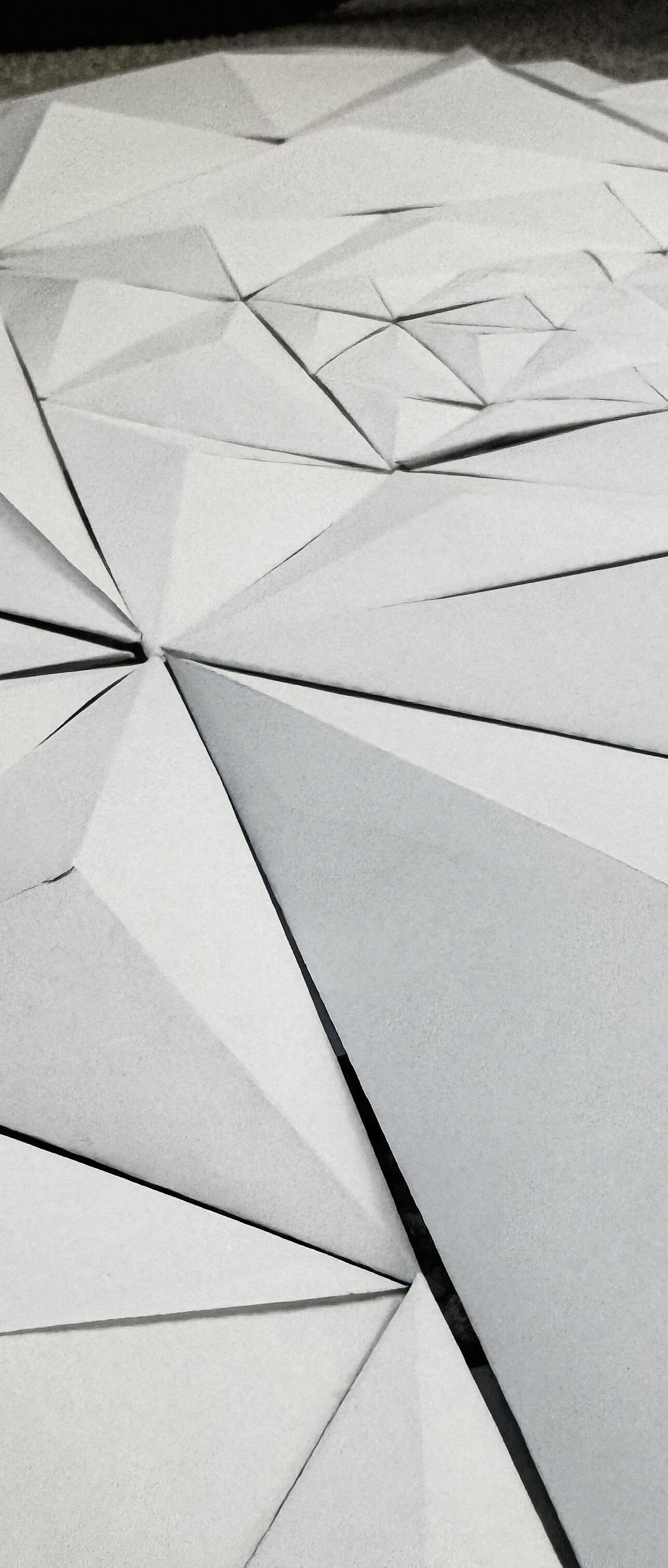

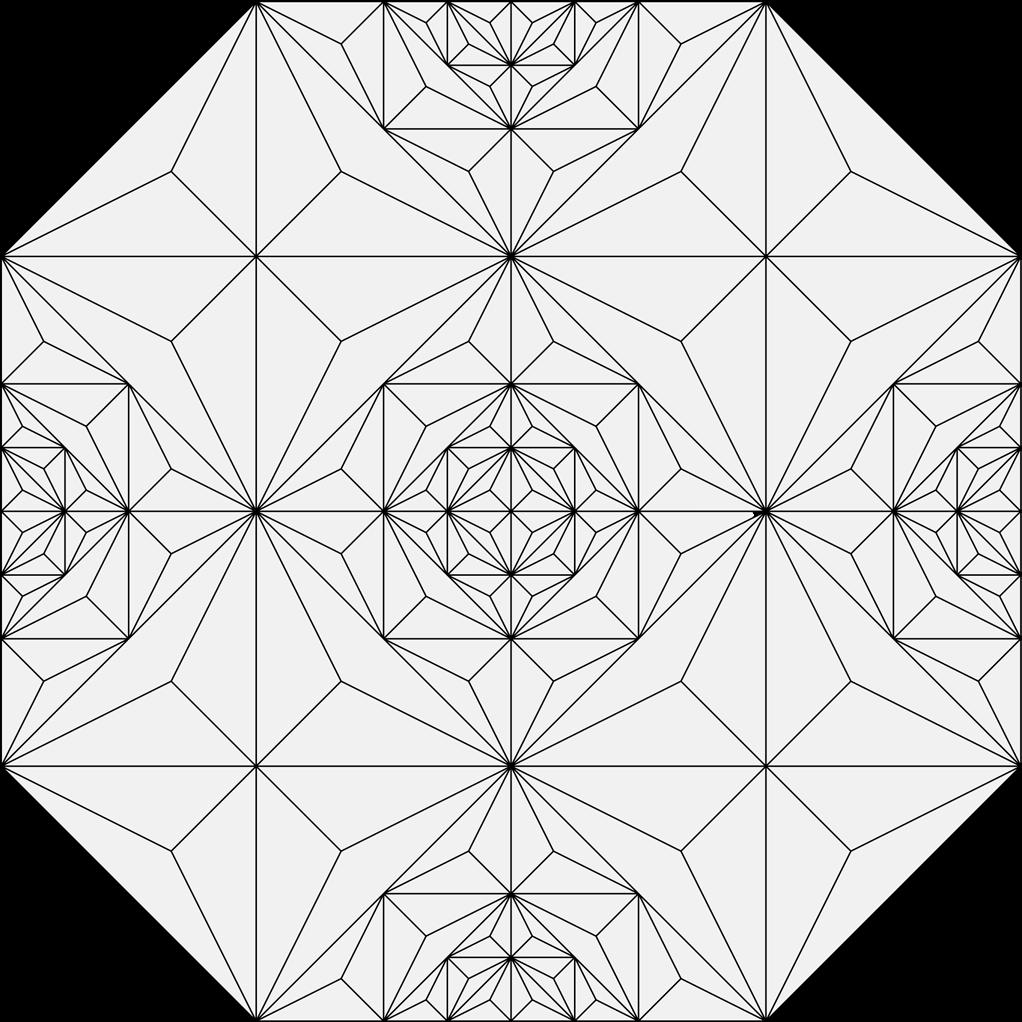

My final prototype is comprised of a pyramid module that diminishes in size proportionally - each larger triangle could fit four of a smaller size inside of it. Using the Unroll tool in Rhino (right) we created simple 2D tessellations that were printed and folded. My final prototype continues the concept of nesting and shadow using a simpler form.
We then digitally modeled our concept in Rhino. The limitations of the Unrool tool and a desire to create a “solid” 3D module pushed me to simplify my concept. I experimented with triangles and found in an initial iteration (left) that folding the final model would be easiest using individual pyramids.

UNROLLED TESSELLATIONS





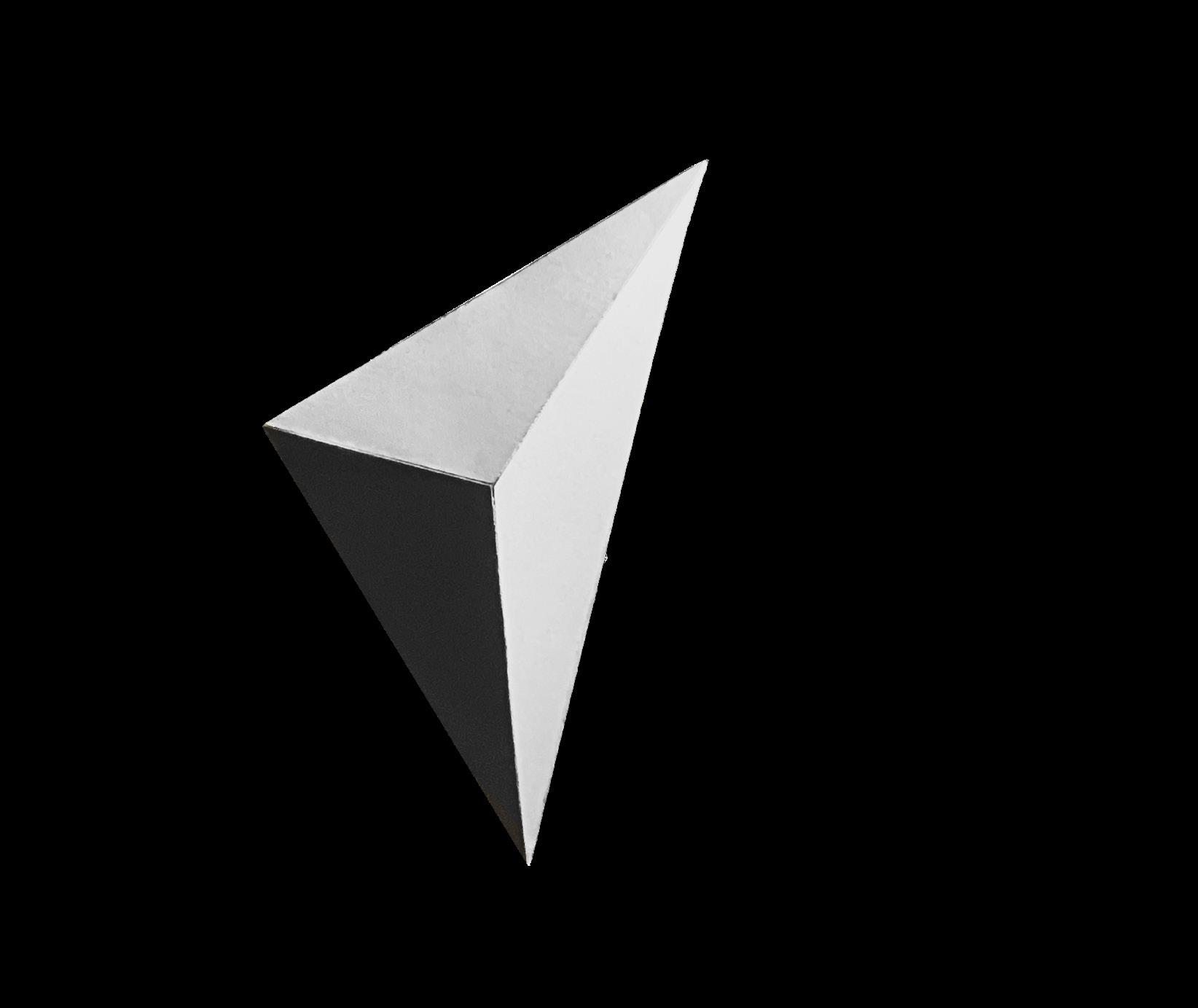

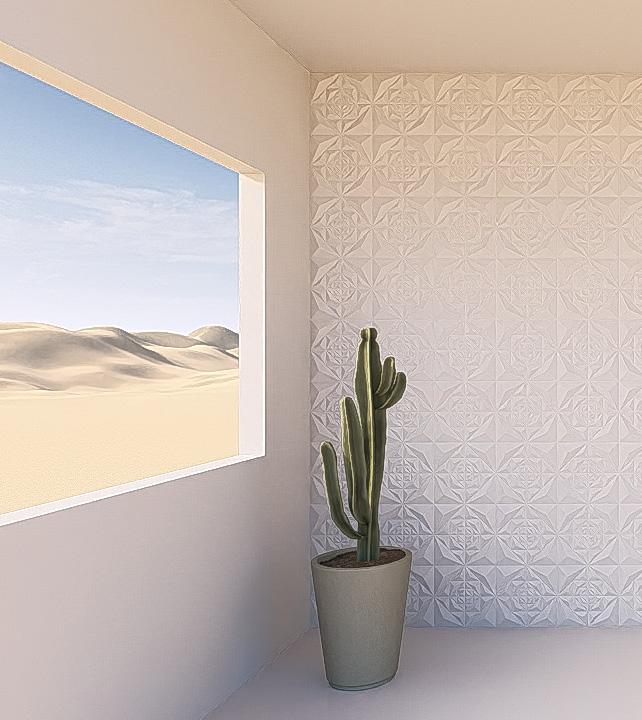
RENDER OF WALL FINISH
